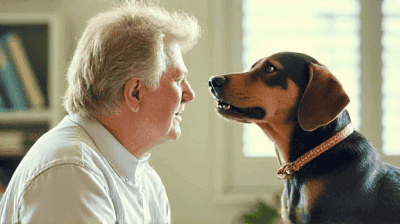
Bringing a new pet into your home is an exciting and life-changing experience, especially for children. Pets provide companionship, teach valuable life lessons, and create lasting memories. However, adopting a pet is not a decision to be taken lightly. Involving children in the pet adoption process can help them develop compassion, responsibility, and a deeper understanding of what it means to care for another living being.
1. Why Involving Children in Pet Adoption Is Important
Teaching Compassion and Empathy
Adopting a pet provides an excellent opportunity to teach children about compassion and empathy. By involving them in the process, they learn to understand the needs and feelings of animals, especially those who have been abandoned or mistreated.
Building Responsibility
Caring for a pet requires commitment and consistency. Involving children in pet adoption helps them develop a sense of responsibility as they learn to contribute to the pet’s well-being.
Strengthening Family Bonds
Adopting a pet is a family decision that can bring everyone closer together. Working as a team to choose, care for, and welcome a new pet fosters collaboration and strengthens family bonds.
2. Preparing Children for Pet Adoption

Discuss the Commitment
Before adopting a pet, have an open and honest conversation with your children about the responsibilities involved. Explain that pets require daily care, including feeding, grooming, and exercise.
Research Different Pets
Involve your children in researching different types of pets and their needs. Discuss factors such as size, energy level, and lifespan to help them understand which pet might be the best fit for your family.
Set Expectations
Make it clear that adopting a pet is a long-term commitment, not a temporary decision. Discuss the financial and time commitments involved, and ensure your children are prepared to contribute.
3. Involving Children in the Adoption Process
Visit Shelters or Rescue Organizations
Take your children to visit local shelters or rescue organizations to meet potential pets. This hands-on experience allows them to interact with animals and understand the importance of adoption.
Encourage Questions
Allow your children to ask questions during shelter visits. This helps them learn more about the pets and feel more involved in the decision-making process.
Let Them Participate in the Selection
While parents should have the final say, encourage your children to share their opinions on which pet to adopt. This gives them a sense of ownership and responsibility.
4. Teaching Children About Pet Care

Assign Age-Appropriate Tasks
Involve your children in caring for the new pet by assigning age-appropriate tasks. For example:
- Younger Children: Help with feeding or brushing.
- Older Children: Assist with walking, cleaning, or training.
Create a Pet Care Schedule
Work together to create a pet care schedule that outlines daily responsibilities. This helps children understand the importance of consistency and teamwork.
Teach Gentle Handling
Explain the importance of handling pets gently and respectfully. Demonstrate how to pet, hold, and interact with the animal to ensure their safety and comfort.
5. Addressing Challenges and Concerns
Managing Allergies
If anyone in your family has allergies, involve them in discussions about hypoallergenic breeds or alternative pets, such as fish or reptiles.
Handling Fear or Anxiety
Some children may feel nervous or scared around animals. Address these concerns by providing guidance, supervision, and opportunities for them to interact with the pet at their own pace.
Dealing with Loss
If you’re adopting a senior pet or one with health issues, discuss the possibility of loss with your children. Teach them how to cope with grief and cherish the time they have with their pet.
6. Educating Children About Pet Adoption and Rescue

Discuss the Importance of Adoption
Explain the difference between adopting a pet from a shelter and buying one from a breeder or store. Teach children about the benefits of rescuing animals in need.
Share Stories of Rescue Animals
Share stories of pets who have been rescued and found loving homes. This helps children understand the impact of adoption and the importance of giving animals a second chance.
Visit Educational Resources
Take your children to pet-related events, such as adoption fairs or educational workshops, to learn more about animal welfare and responsible pet ownership.
7. Making the Transition Smooth for the Pet and Family
Prepare Your Home
Involve your children in preparing your home for the new pet. This includes setting up a designated space, purchasing supplies, and ensuring the environment is safe.
Introduce the Pet Gradually
Help your children understand the importance of giving the pet time to adjust to their new surroundings. Encourage them to be patient and respectful during the transition period.
Supervise Interactions
Supervise interactions between your children and the new pet to ensure everyone’s safety. Provide guidance on how to approach and handle the animal appropriately.
8. Encouraging Long-Term Responsibility
Monitor Progress
Check in with your children regularly to ensure they are fulfilling their pet care responsibilities. Offer praise and encouragement to keep them motivated.
Adjust Responsibilities as Needed
As your children grow older, adjust their responsibilities to match their age and capabilities. This helps them continue to develop their sense of responsibility.
Foster a Lifelong Love for Animals
Encourage your children to continue learning about animals and their needs. This fosters a lifelong love for animals and a commitment to their well-being.
9. Teaching Children About Pet Safety
Understanding Pet Body Language
Teach your children how to recognize signs of stress, fear, or aggression in pets. This helps them interact with the animal safely and respectfully.
Avoiding Harmful Behaviors
Explain why certain behaviors, such as pulling tails or ears, are harmful to pets. Teach your children how to play with the pet in a gentle and appropriate manner.
Emergency Preparedness
Involve your children in creating an emergency plan for your pet. This includes knowing what to do in case of illness, accidents, or natural disasters.
10. The Benefits of Involving Children in Pet Adoption
Improved Emotional Well-Being
Pets provide comfort, companionship, and a sense of purpose for children. Involving them in the adoption process strengthens their emotional connection to the animal.
Enhanced Social Skills
Caring for a pet teaches children important social skills, such as empathy, patience, and communication.
Academic and Cognitive Benefits
Pets can inspire curiosity and learning in children, leading to improved academic performance and cognitive development.
Conclusion
Involving children in the pet adoption process is a rewarding experience that teaches compassion, responsibility, and the value of giving animals a second chance. By preparing your children, educating them about pet care, and including them in every step of the process, you can create a positive and meaningful experience for the entire family. Remember, adopting a pet is a lifelong commitment, and fostering a loving and responsible environment ensures your new furry friend will thrive in their forever home.






